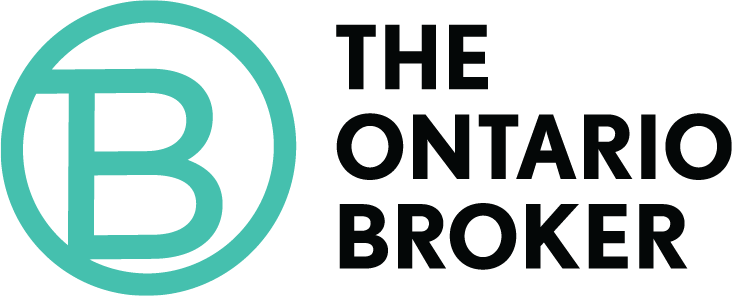

Pam Albert—Consultant & Executive Coach

Joel Burgess—Studio Director, Capybara Games
There are countless books, articles, podcasts, seminars, and every other format you can think of, offering advice on being an effective leader—there’s practically a whole industry built upon creating this content. As much as foundational leadership advice will often remain unchanged over time, there’s been a monumental shift in the working world in the past two years which has required some adaptation from everyone.
“The ability for leaders to think out of the box, to be creative and to evolve has never been more important. Leaders often have to embrace change in order to survive and flourish in changing times,” said Pam Albert, whose practice as an Executive Coach has had her working with top executives in prominent organizations.
The accelerating pace of change driven first by rapid developments in technology, then even more abruptly by the pandemic, requires a higher degree of adaptability from leaders and ultimately the companies they guide.
Joel Burgess is the Studio Director at Capybara Games, a Toronto-based independent video game studio currently best known for the Apple Arcade game Grindstone—a unique mash-up of a puzzler and a Role Playing Game (RPG). His ability to adapt was tested soon after being recruited by the studio’s founders to his role in late 2019.
“I joined right after the release of Grindstone in November 2019. Then the pandemic hit and like everybody else we had to shut our doors. We had to decide to shelf the other project we were working on,” said Joel. “By then, I’d been there long enough to get the lay of the land—how does this team work, how do they jive with each other and what other opportunities do we have right now? So we pivoted Grindstone from a single player experience to an ongoing game constantly updated with new content daily—a model our studio hadn’t tried before.
“We were able to adapt to working from home, we made the game a better experience for players, all while supporting the team, who got to try doing new things. Two years later that game has had continued success. It’s not something I feel I can take individual credit for, but helping the team see that path and helping them achieve it is something I’m proud of.”
Lead from the Rear
There’s an old idea of what a leader does—being out front, taking charge, displaying confidence, making tough calls—and while leaders will certainly have to do all of those things, there’s a less top-down model that’s come into vogue.
“It’s important to know when it’s the right time to speak up and when it’s the right time to let the team take the lead,” said Joel. “I’ve seen people in leadership positions try to brainstorm with the team as though they’re a peer, but what’s actually happening is the people below them will supress their suggestions or feel like they’re being dictated to. You have to know when to let expertise lead—they’re closer to the work and often more up to date.”
“One common mistake that leaders make is failing to take the time to listen and think and develop the best plan or approach,” said Pam. “Some leaders can tend to delve right in and even make decisions based on their gut. But the best leaders are often the best listeners.”
“I think good leadership requires a practiced absence of ego. It’s natural for those of us who find ourselves in leadership roles to have some degree of ego, and that’s okay. But when you’re doing the actual job of leading a group you want to be able to consciously set that aside. When you are representing to external parties, defer praise and credit to the team. When setting goals and priorities, make sure you are putting the needs of the individual contributors and the project ahead of your own. When you’re able to do this, your leadership goes beyond superficial charisma or the brute force of your own contributions, it will earn the respect and trust of the team which is crucial to doing your job well.”
Pam’s Most Frequently Given Advice
- Accept yourself with all
- of your flaws
- Listen to others and listen to yourself before you make decisions
- Always be open to learning,
- in every way you can
- Surround yourself with people who
- are smarter than you
- Be open to trying new things
Constructing the Right Environment
With businesses currently being in a mixture of fully in person, fully remote or a hybrid model, there’ll be huge differences in how to go about creating a healthy environment and some of how to do that is still being worked out. But there are things that are true across all models.
“Of course you want people feel that they are seen and rewarded. You also want to make people feel that they’re in an environment where they’re empowered to do the thing they’re good at, with minimal interference. And ensure that they have visibility on the strategic meaning of their work, so that if they are in the position where there is some friction for them, they at least know why,” said Joel.
“Leaders have had to become more flexible and more trusting of their staff to work on their own. I think leaders are seeing that when given the space, that their teams are actually getting their work done. Staff sense when they are trusted, and as a result, they feel proud of their work and newfound independence, and in turn performance increases,” said Pam.
One of the key functions a leader has is ensuring that their team is doing well personally and this has only become more necessary in recent years.
“Checking in on people and giving them one-on-one time is essential in any setting,” said Joel. “In an office if somebody comes in and they’re having a bad day, I can see it. Maybe they’re late and their posture is slumped over, you can detect a feeling based on their body language. So, you can take them for lunch or a coffee.
“When you’re remote, that problem becomes more difficult. Those soft signals that someone needs support aren’t there, so I use one-on-one meetings that are positioned as time for the employee, not me as their manager. That’s become our most useful tool for detecting how people are doing. Even if everyone isn’t together each day, a leader still needs to check in with team members and have a pulse on how they are.”
Molding the Future
A solid team obviously is a crucial to success. As you’re hiring and promoting, it’s good to keep in mind what kind of qualities you want to cultivate, as that will ultimately shape the values of your business.
“I think of leadership as a skill. Some folks may start with natural advantages—maybe a natural comfort dealing with others, or decisiveness when others are unsure—but I don’t believe that a born leader is ultimately the best leader,” said Joel. “Folks for whom leadership is outside of their comfort zone may be more likely to treat it as discipline that can be learned and worked at over time. That’s why for me, reluctance to lead is often one of the traits I look for in a future leader.”
“I will never forget a CEO telling me how he built a successful team. He put people around him who were much smarter than himself in their area of expertise,” said Pam. “Bring a team together and empower them to blossom as leaders in their own ways or with their own portfolios and responsibilities.
“To me, so much about being a leader is around trust and engagement with others.”
“The ability for leaders to think out of the box, to be creative and to evolve has never been more important.”
